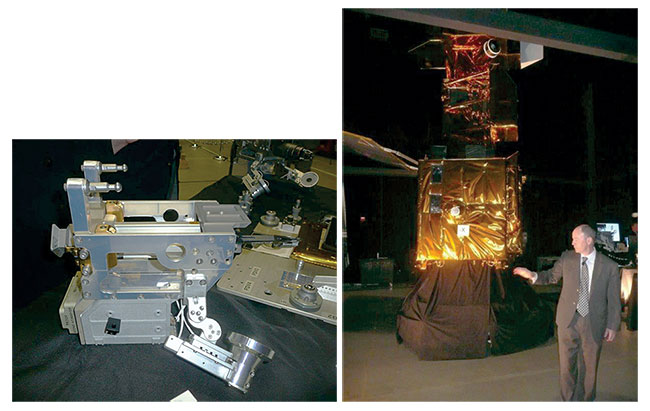NASA sees a hat trick in its robotics program
DOI: 10.1063/PT.3.2877
What do NASA’s plans for capturing and retrieving a chunk of an asteroid and for servicing Earth-orbiting satellites have in common? They require a similar set of robotic capabilities that will also be needed for an eventual manned visit to Mars.
Of the roughly 1000 satellites in orbit, only two were designed to be serviced: the Hubble Space Telescope and the International Space Station (ISS), notes Benjamin Reed, deputy project manager of NASA’s Satellite Servicing Capabilities Office (SSCO). Once the others run out of propellant, they are left to drift in orbit or are directed into the ocean. The SSCO program proposes another denouement: Asks Reed, “Is there a way we could refuel them, repair them, extend their useful lives, and bring an additional return on investment to whoever owns that satellite?” (See Physics Today, March 2015, page 19
It won’t be easy, he admits; he likens the feat to changing the oil on a car while it’s traveling at 60 mph. Depending on whether a satellite is in geostationary or low-Earth orbit, it travels at anywhere from 12 900 km/h to 29 000 km/h. To refuel one, a servicer will have to catch up to it, exactly match its speed, grab it softly enough to avoid damage, open a fueling port that wasn’t designed for opening, and pump in fuel at a pressure of 1724 kilopascals.
Similar challenges loom for NASA’s plan to send a robotic spacecraft to a near-Earth asteroid, retrieve a large boulder from its surface, and transport it into a stable orbit around the Moon. Both missions require precision tools designed for specific tasks. Both will also have to adjust to spinning; thrusters and algorithms have limited ability to match the rate at which the client satellite or asteroid is tumbling, says Reed.
Jill McGuire, robotic refueling program manager, says that experimenters succeeded in transferring ethanol—in place of more volatile fuel—on a mock fuel port attached to the ISS. In the next iteration, they will attempt to reseal the fuel ports. Robotic tools are also being tried out at NASA’s Goddard Space Flight Center, on full-scale mock-ups of the Landsat 7 and GOES 13 satellites. Ultimately, NASA wants to try to service a satellite in the 2018–23 time frame, in conjunction with a private-sector partner.

A combination wire- and blanket-cutting tool for refueling satellites is shown at left. At right, Benjamin Reed, deputy project manager of NASA’s Satellite Servicing Capabilities Office, stands beside a mock-up of the Landsat 7 satellite at Goddard Space Flight Center.
DAVID KRAMER

Typically, refueling a satellite could extend its life by three to five years, says Joe Pellegrino, a program manager at Goddard. Satellites have only a few variations in fuel-port designs, and most US satellites have a ring that was attached to the launcher and that can be used for docking. A servicer could also fix problems that crop up with satellites once or twice a year, such as a stuck antenna or a solar panel that won’t fully deploy, he says.
Engineers are developing a different set of tools for the robotic asteroid redirect mission. They include grippers called “microspines,” each of which has dozens of independently sprung sharp “fingernails” to grab hold of a boulder. No one knows for sure what the consistency of the rock will be, so NASA engineers are testing the grippers on samples ranging from crumbly to hard. The grippers will be at the ends of two 2-meter-long arms that will clutch the boulder as the spacecraft lifts off the asteroid. Once off the surface, the landing legs will encircle the rock on its way to the Moon.
More about the Authors
David Kramer. dkramer@aip.org
